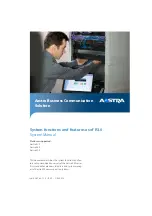
2.
Rotate the drive downward until it snaps into place.
3.
Connect the interposer card to the optical drive.
4.
Push the plungers into the captive fastener barrels until they snap into place.
5.
Connect the interface and power cables to the optical drive's interposer card
6.
Close the system. See "
Closing the System
" in "Troubleshooting Your System."
SCSI Configuration Information
Although SCSI drives are installed in essentially the same way as other drives, their configuration requirements are different. To install and configure a SCSI
drive, follow the guidelines in the following subsections.
SCSI Interface Cables
SCSI interface connectors are keyed for correct insertion. Keying ensures that the pin-1 wire in the cable connects to pin 1 in the connectors on both ends.
When you disconnect an interface cable, take care to grasp the cable connector, rather than the cable itself, to avoid stress on the cable.
SCSI ID Numbers
Each drive attached to a SCSI controller must have a unique SCSI ID number from 0 to 15.
l
The SCSI hard drive from which the system boots is configured as SCSI ID 0.
l
If you install optional SCSI drives or change your SCSI configuration, see the documentation for each SCSI drive for information on setting the
appropriate SCSI ID number.
Device Termination
SCSI logic requires that termination be enabled for the two drives at opposite ends of the SCSI chain and disabled for all drives in between. For internal SCSI
drives, termination is configured automatically. See the documentation provided with any optional SCSI drive you purchase for information on disabling
termination.
Configuring the Boot Drive
The drive or device from which the system boots is determined by the boot order specified in the System Setup program. See "Using the System Setup
Program" in your
User's Guide
. To boot the system from a hard drive or drive array, the drive(s) must be connected to the appropriate controller:
l
To boot from a single SATA hard drive, the master drive (drive 0) must be connected to the SATA_PORT_0 connector on the system board. To identify
system board connectors, see
Figure A
-3
.
l
To boot from a single SCSI hard drive, the drive must be connected to the SCSI controller card. See the documentation that accompanied the controller
card.
l
To boot from a SCSI RAID array, the drive must be connected to the RAID controller card. See the documentation that accompanied the controller card.
Hard Drives
Your system contains up to two non-hot-pluggable SATA or SCSI hard drives. If your system contains SCSI hard drives, they must be connected to a SCSI
controller board. The cables for hard drive 1 are routed through a cable clamp mounted to the chassis.
The procedures for removing and installing SATA or SCSI hard drives are the same.
1.
Open the system. See "
Opening the System
" in "Troubleshooting Your System."
2.
If applicable, remove the CD drive.
NOTE:
There is no requirement that SCSI ID numbers be assigned sequentially or that drives be attached to the cable in order by ID number.
CAUTION:
Many repairs may only be done by a certified service technician. You should only perform troubleshooting and simple repairs as
authorized in your product documentation, or as directed by the online or telephone service and support team. Damage due to servicing that is not
authorized by Dell is not covered by your warranty. Read and follow the safety instructions that came with the product.
Содержание PowerEdge SC1425
Страница 27: ...Back to Contents Page ...















































